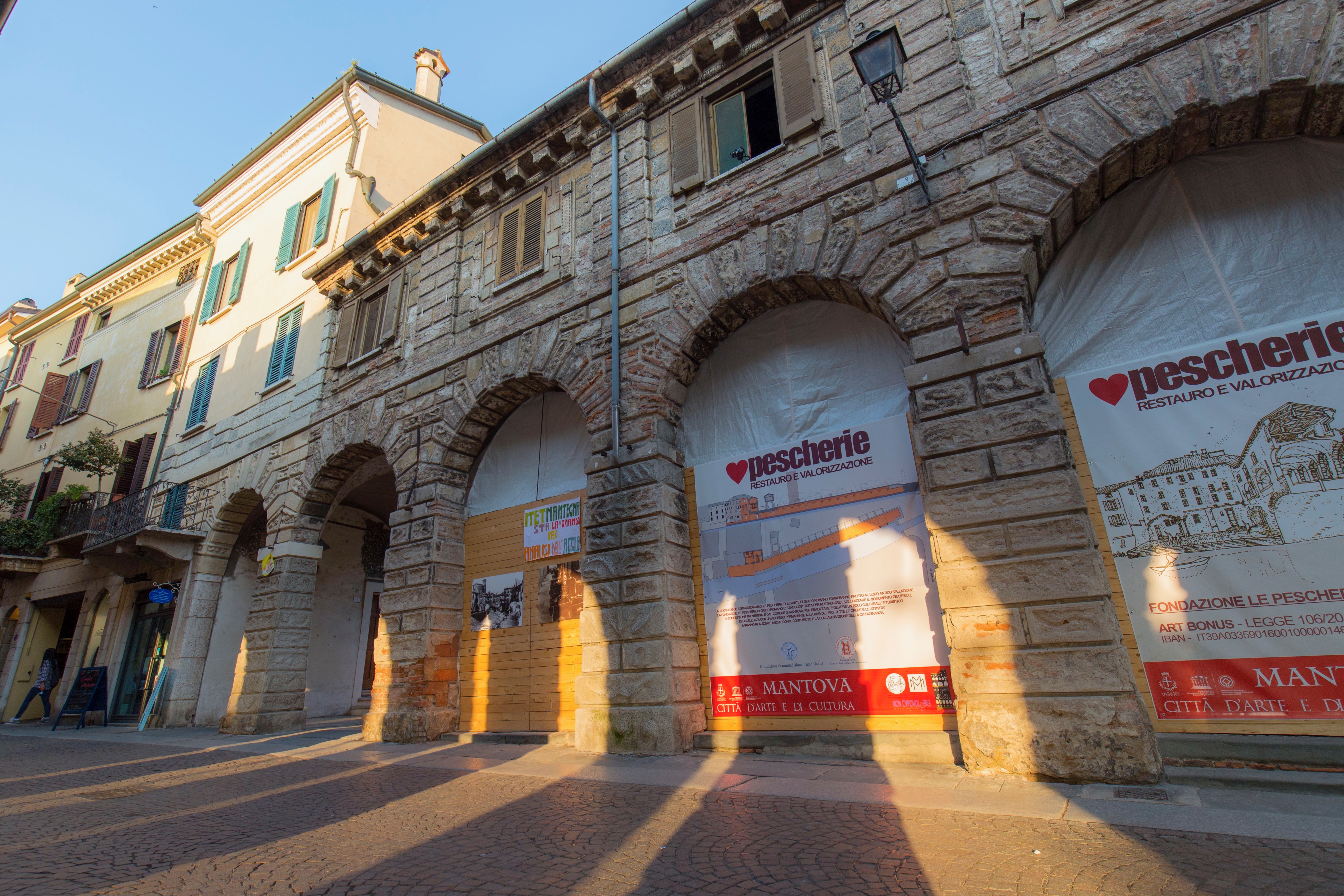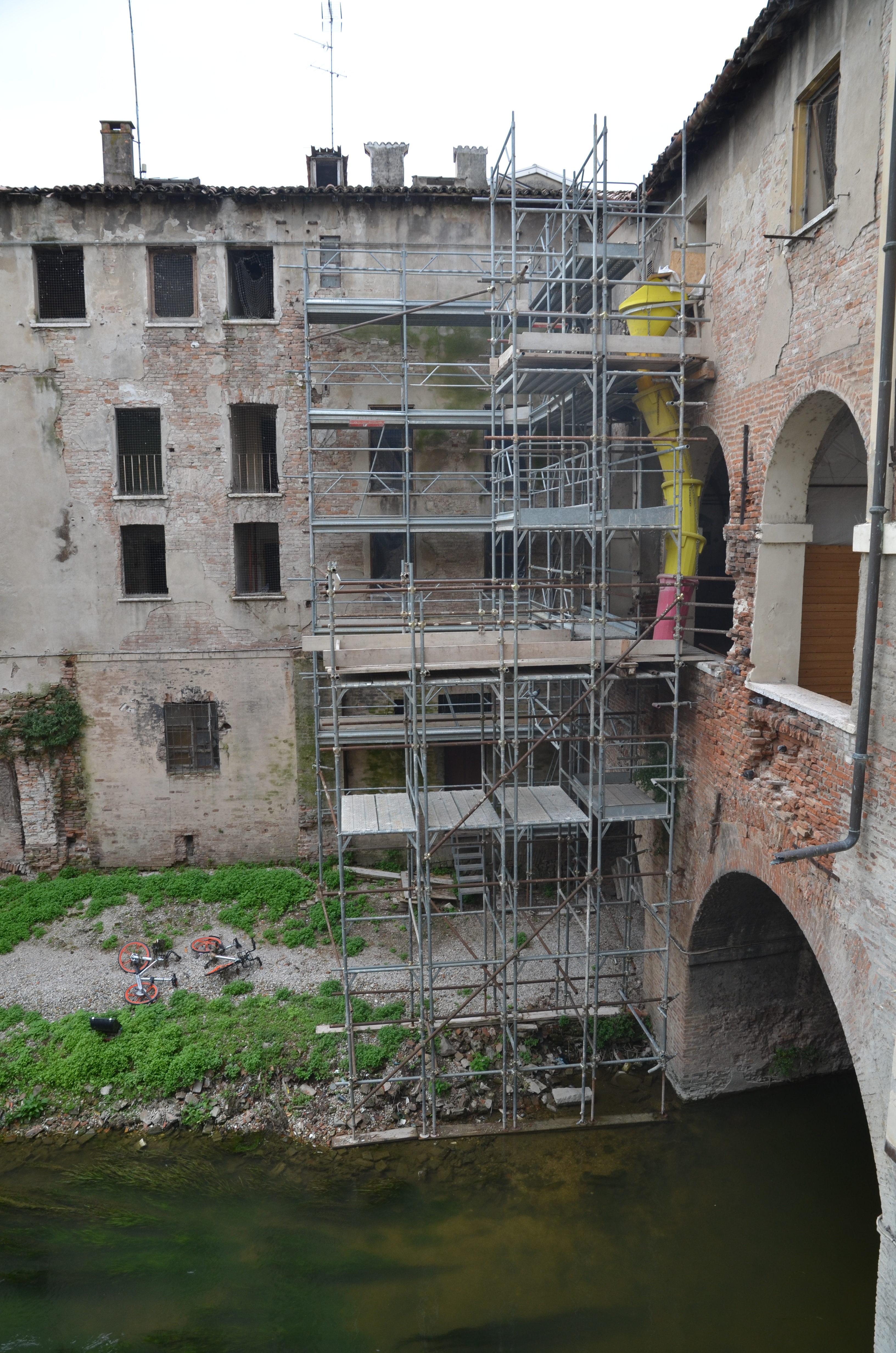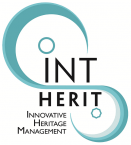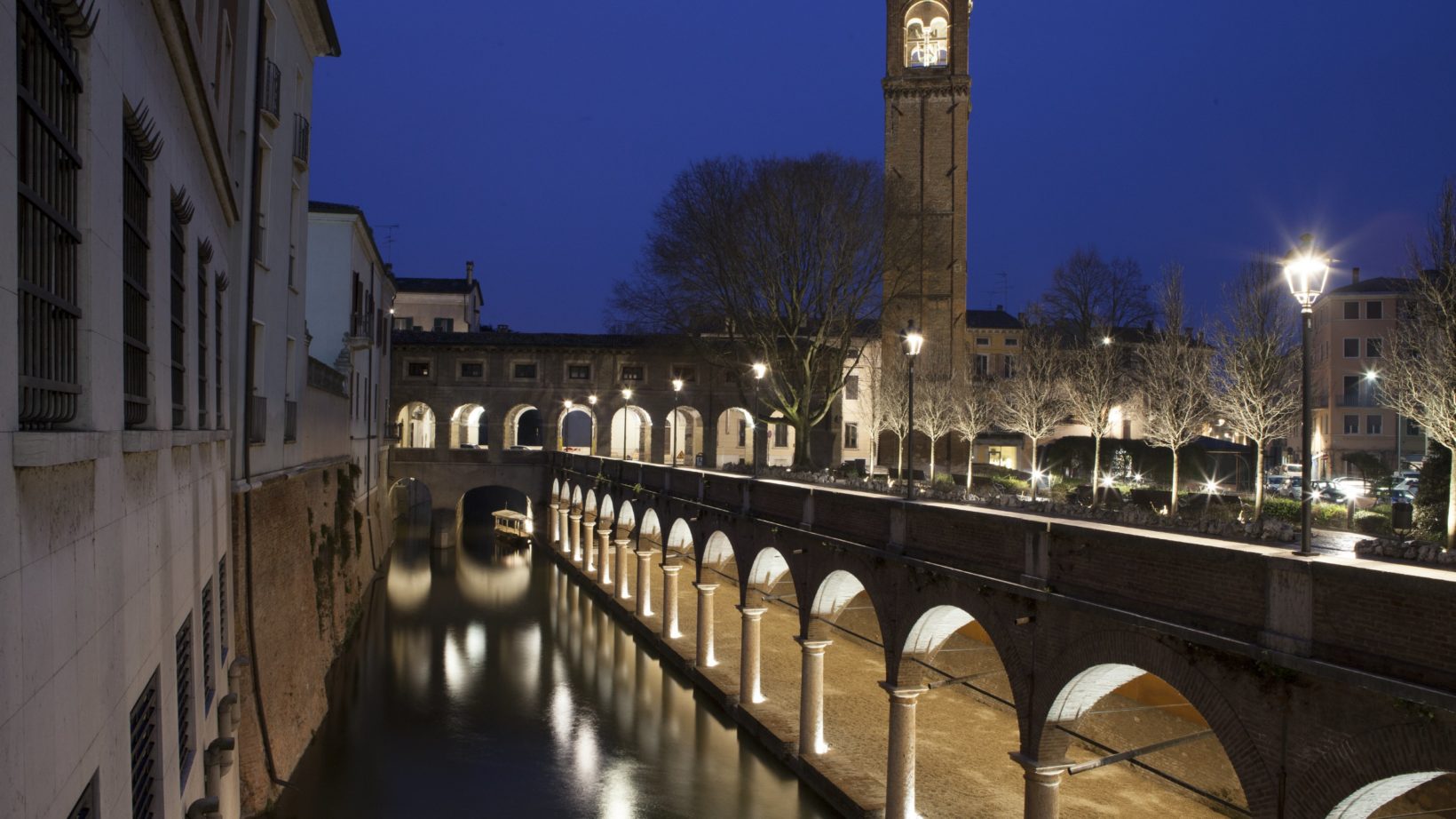Summary
The Municipality of Mantova granted the Pescherie and Beccherie buildings to a private foundation with the goal to restore, preserve and reuse the abandoned complex. The strategy for this action is to give back to the city a living part of its historical center, forming a renovated pole for cultural activities in the heart of the town, while making the management of the space more sustainable for the Municipality. The monument is particularly remarkable for the city context, as its water-related nature has an important link to the lacustrine roots and identity of Mantova, and its positioning as monumental entrance to the city historical center makes it one of the most important landmarks in the town.

Solutions offered by the case example
The project concerning the Pescherie and Beccherie complex offers a variety of solutions, that can be resumed on three main strands:
- the restoration works will allow the reuse of a neglected public space and renovation of the historical buildings with the consequent recovery of the related cultural heritage and history, making also the area more attractive for citizens and tourists;
- the creation of a public/private collaboration, between the Municipality and the foundation, has made the management of the complex more sustainable and it will ease the burden for the public administration for the following years;
- the creation of the public/private collaboration, based on a multidisciplinary and holistic methodology of the governance and management process of the city, has also encouraged a participatory approach to the project, bringing together citizens, cultural operators and authorities.
Building on the sustainable and integrated approach

The strategy of the project contemplates also the aspect related to the sustainability of the actions in the middle and long term, as a matter of facts the foundation also plans to start some form of business in the complex to ease the burden of the costs related to the management of the buildings. The activities are going to be a bar/cafeteria that will sell local and organic products, and once the navigation facilities on the Rio Canal will be restored it will be possible to start a form of public transport and touristic attraction that could exploit the direct link to the lakes. The foundation, with the support of the Municipality and its different offices (environment, urban planning, UNESCO and an interdisciplinarity approach between the different sectors), is also in charge of finding the economic resources needed to complete the works and to start the new business activities, and it has started different forms of fundraising activities, starting from crowdfunding methods to bank loans and applying for private, regional and national funding opportunities.
Based on a participatory approach
The Municipality has involved the local stakeholders, during the ULG meetings, to devise a strategy for the use of the spaces in the Pescherie building once they’ll be renovated. Using this participatory approach mixed the know-how of the different stakeholders, fostering possible future collaborations. The focus of the meetings was to help the foundation in the process of choosing the destination for the attic space, which will be used to host cultural activities with various stakeholders involved, and to devise the best strategy for the business activities that will be hosted by the complex.
What difference has it made? How did the result indicator shift?
The creation of a public/private collaboration in order to restore and manage the monuments has eased the Municipality both on the administrative and economic aspects, fostering also the civic participation in such a strategic action for the town. The project itself is the reason for the creation of a new private cultural subject in the city, Fondazione Le Pescherie di Giulio Romano, that will not only act on the buildings but also on their cultural animation, bringing tens of new cultural events in the heart of the city center (1 per month circa). The restoration works will give back the community at least one space for cultural activities, and at least one new related business activity. It’s still too soon to ascertain the impacts of the action on tourism, but for sure the citizens are eager to see the results of the project, and the participation of local high schools (Istituto Mantegna, Liceo Belfiore) to the activities of monitoring the quality of the waters of the Rio Canal is a good starting point, with several classes and teachers involved in the process.
Why should other EU cities use it?
Other EU cities should use this kind of approach as it could give them the opportunity to preserve and restore part of their cultural heritage while avoiding the risk of selling invaluable monuments (or other kinds of heritage) to private subjects. In this way the costs, both economic and of Human Resources, for the public administration is greatly reduced, if not completely, while the object of the action remains of public domain with all the advantages for the city related to this aspect. The participatory approach in the decision-making process is also very important, as it raises the awareness of the citizens about a specific monument, its history and cultural value for the town. The cooperation between public and private sector could be hard at times, but if it is successful it could bring great results to a city and its heritage in terms of innovation and sustainability.
Key Facts and Figures:
- Startand end dates of case example 2016 – 21
- Dateof preparation of this case example 20/10/18
- Whoprepared the case example? Emanuele Salmin
- Budget€ 752.000
Extra information and hyperlinks
Le Pescherie di Giulio Romano in Mantova. The INT-HERIT gaze

